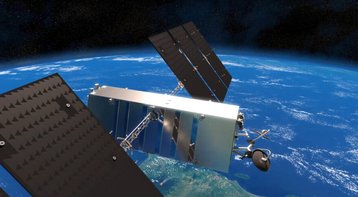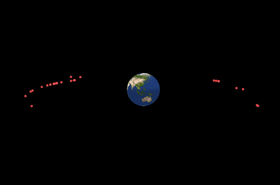Satellite operator Telesat plans to use Aalyria’s Spacetime networking tech for its Lightspeed satellite constellation.
Spacetime tries to find the best route for customer data between any two points on Earth by simulating a digital twin of the Earth. Aalyria spun out of Google in 2022, and also develops free-space optics hardware under Project Tightbeam.
DCD profiled Spacetime and Tightbeam in the latest magazine, available for free here.
“Aalyria’s Spacetime orchestration capabilities are a key enabler in achieving the lowest latency, highest availability, and resiliency for meeting the committed information rates and service level agreements for our enterprise-class LEO services,” Dave Wendling, Telesat’s CTO, said.
“Aalyria’s expertise and heritage with Spacetime align perfectly with our vision for Telesat Lightspeed, and we are confident that this partnership will contribute to the success of this revolutionary network.”
The agreement will last 10+ years and comes after Aalyria signed similar deals with Intelsat, Airbus, Rivada Space Networks, HICO, and others.
Telesat's Low Earth Orbit (LEO) Lightspeed fleet is expected to begin launching in mid-2026, with polar and global broadband network services starting in late 2027.
The constellation was originally set to launch in 2020 with 298 satellites, but that was pushed to 2023 due to delays in choosing a contractor. That date was missed thanks to supply chain issues, so in August Telesat said that it was switching from contractor Thales Alenia Space to MDA.
The redesigned constellation is expected to come in $2 billion cheaper, in part thanks to Canadian government contributions, for a total constellation cost of $3.5bn.




